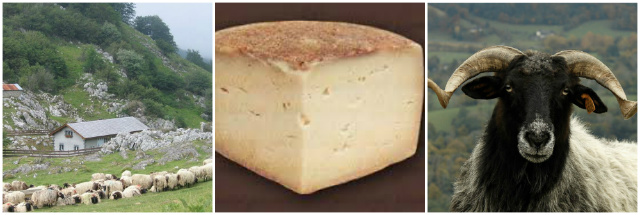A soft, white, unsalted, fresh sheep or goat's milk cheese from western France. It is made on farms and may either be packed in pots or in rush baskets called jonchées.
A soft sheep’s milk cheese from Loches in Touraine, an area better known for its goat’s milk cheeses.

A wheel of high fat, firm sheep’s milk cheese from the Pays Basque. Brebis is French for the Ewe sheep, the female, from which the cheese, Brebis le Cayolar is traditionally made. Sheep’s milk cheeses can be found throughout France from soft, mild, and creamy to hard, crumbly, and pungent. However, Brebis from the Pyrenees, considered by many to be the best, is made from unpasteurized milk and is pressed into a mold, has a natural rind, and often has sweet pepper, Piment d’Espellette, added. A bleu or blue form of Brebis le Cayolar, while not as prevalent, also exists. Made high up in the Pyrenees mountains, typically in the small and spare shepherd’s cabins called cayolar or cujala, Brebis le Cayolar is made from the milk of 3 indigenous sheep breeds: the Manech Tête Noire, the Manech Tête rousse, and the Basco-Béarnaise. Since the mountain pastures are often found in highly inaccessible locales and the milking period did not historically allow for the milk to be returned down the mountains, Brebis le Cayolar had to be produced in small batches in the cayolars.
Tootache plant. A native of the tropics and Brazil, this plant is grown ornamentally elsewhere and the leaves are said to have a numbing effect on toothache. Small quantities of shredded fresh leaves may be used in salads or cooked they can be used as greens. In Brazil they are used in stews. Buds, if eaten, can produce an overwhelming tingling numbing of the mouth and throat.